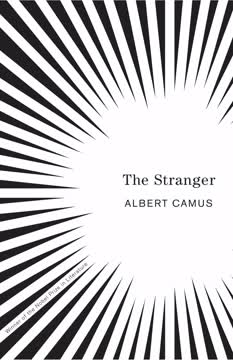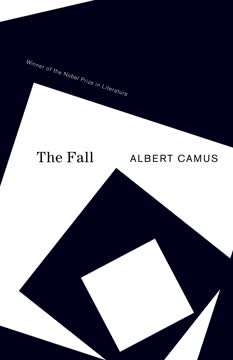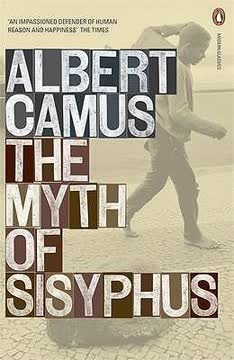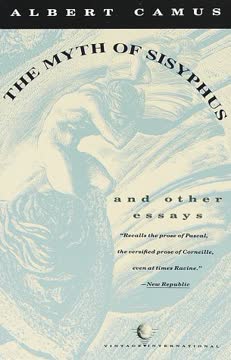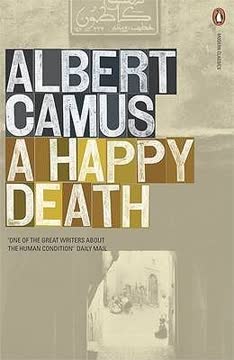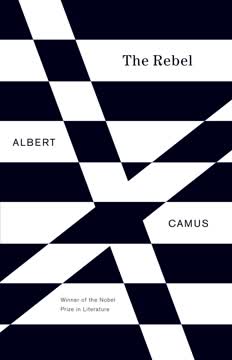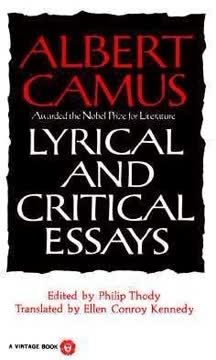Plot Summary
Caligula's Impossible Grief
After the death of his beloved sister Drusilla, Emperor Caligula is consumed by the realization that happiness is impossible and death is inescapable. This existential shock drives him to seek the impossible—symbolized by his desire for the moon—and to test the limits of his power and freedom. His grief mutates into a cold, logical cruelty, as he decides to force the world to confront the truth he has discovered: that men die and are not happy. Caligula's pain becomes the engine of his tyranny, and his court is left bewildered and terrified by his transformation.
The Logic of Tyranny
Caligula's reign becomes a systematic experiment in absolute power and the perversion of logic. He issues arbitrary, devastating edicts—confiscating wealth, orchestrating executions, and humiliating the Roman elite. He insists on the equality of all things, reducing life and death to the same level of insignificance. His actions are not random madness but a deliberate, intellectual rebellion against the world's meaninglessness. He seeks to be "free" at the expense of others, pushing his logic to its destructive conclusion.
Rome's Descent into Madness
The Roman court, once stable, is now a theater of fear, humiliation, and absurdity. Caligula's cruelty is theatrical—he forces nobles to laugh at their own tragedies, turns the state into a brothel, and mocks the very idea of justice. His closest confidants, like Cæsonia and Helicon, are both complicit and powerless. The patricians, stripped of dignity and security, begin to plot his assassination, realizing that Caligula's logic threatens not just their lives but the very meaning of existence.
Conspirators in the Shadows
Led by Cherea, the conspirators debate the morality of killing a tyrant who has become a philosophical monster. Cherea recognizes that Caligula's crime is not just murder but the destruction of meaning and hope. The plotters are driven not only by personal loss but by the need to restore a world where actions and values matter. Caligula, aware of the conspiracy, seems almost to invite his own destruction, having pushed his logic to the point of self-annihilation.
The Limits of Freedom
In the end, Caligula's pursuit of absolute freedom—freedom without regard for others—isolates him completely. He kills those closest to him, including Cæsonia, and is finally murdered by the conspirators. His last words are a defiant, tragic assertion of life, even as he is destroyed by the very logic he unleashed. The play closes on the emptiness of a world where freedom is severed from solidarity and love.
The Misunderstood Return
In "The Misunderstanding," Jan returns home after years abroad, hoping to bring happiness to his mother and sister. He conceals his identity, expecting to be recognized by love alone. His mother and sister, hardened by years of poverty and crime, fail to recognize him and, following their grim routine, murder him for his money. The fatal misunderstanding is that simple sincerity—saying "It's I"—could have saved everyone, but silence and ambiguity lead to irreversible loss.
Fatal Silence and Sincerity
The play explores the suffocating effects of emotional distance and the failure to communicate. Jan's wife, Maria, arrives too late, and the family is destroyed by their inability to speak plainly. The Mother, upon discovering the truth, is consumed by grief and guilt, while Martha, the sister, is left alone, embittered and exiled from love. The old manservant, a silent witness, offers no help—pain, Camus suggests, is ultimately solitary.
The House of Shadows
The inn becomes a symbol of existential exile—a place where love, recognition, and belonging are impossible. The characters are trapped by their own emotional limitations and the bleakness of their environment. The play ends with Maria's desperate prayer for help, met only by the old man's indifferent "No." Camus's message is stark: in a world without basic sincerity and connection, tragedy is inevitable.
Plague Descends on Cadiz
In "State of Siege," the Spanish city of Cadiz is visited by a comet and then by the personified Plague, who seizes power and imposes a regime of fear, bureaucracy, and silence. The city's leaders, eager to avoid responsibility, surrender authority to the Plague, who rules through arbitrary regulations, surveillance, and the systematic destruction of solidarity. The people are reduced to numbers, their lives controlled by paperwork and fear.
Bureaucracy and Oppression
The Plague's secretary, a cold administrator, enforces the new order with relentless efficiency. Citizens are forced to justify their existence, betray each other, and accept the logic of collective guilt. The city is sealed off, and even love is forbidden. The machinery of oppression is self-perpetuating, and resistance seems futile. Yet, the human spirit is not entirely crushed—small acts of defiance and memory persist.
Lovers Against the Plague
Amid the terror, Diego and Victoria, young lovers, struggle to maintain their humanity and connection. Their love is threatened by fear, suspicion, and the Plague's logic, but it also becomes a source of hope and rebellion. Diego's journey from fear to courage inspires others to resist, and the city's eventual revolt is sparked by the refusal to accept silence and submission.
Revolt and the Human Spirit
The people of Cadiz, led by Diego, reclaim their voices and their dignity. The Plague is ultimately defeated not by violence but by the collective assertion of hope, solidarity, and the refusal to be ruled by fear. Yet, Camus warns that the cycle of oppression can return—the machinery of bureaucracy and the temptation of power are always waiting. The play ends with a call to vigilance and the recognition that freedom must be constantly renewed.
The Price of Justice
In "The Just Assassins," a group of Russian revolutionaries plot to assassinate the Grand Duke. They are torn between the necessity of violence and the desire to remain just. Kaliayev, the chosen assassin, refuses to kill when children are present, insisting that even in revolution there are limits that must not be crossed. The group debates whether the ends justify the means, and whether innocence can survive in a world of violence.
The Just Assassins' Dilemma
The play delves into the psychological and ethical struggles of the conspirators. Stepan, hardened by suffering, advocates for total ruthlessness, while Dora and Kaliayev cling to the hope that justice can be achieved without losing their humanity. The act of assassination is both a protest against tyranny and a personal sacrifice—Kaliayev knows he must die for his act to be justified.
The Bomb and the Scaffold
Kaliayev throws the bomb only when the Grand Duke is alone, sparing the innocent. He is arrested and faces execution, refusing to betray his comrades or repent. The Grand Duchess confronts him, seeking repentance or forgiveness, but Kaliayev insists on the justice of his act and the necessity of paying with his own life. The play ends with his execution, and Dora's resolve to continue the struggle, even as she mourns the loss of love and innocence.
Love, Sacrifice, and Despair
Across all four plays, Camus explores the tension between love and justice, freedom and responsibility, revolt and despair. His characters are driven by the desire for meaning and connection, but are constantly confronted by the absurdity and cruelty of the world. Sacrifice is both necessary and tragic—those who fight for justice often lose the very things that make life worth living.
The Enduring Question
Camus's plays ask whether it is possible to rebel against injustice without becoming unjust, to seek freedom without destroying others, to love in a world marked by suffering and death. The answer is never simple. The plays end not with easy solutions but with the recognition that the struggle for meaning, justice, and love is endless—and that the only unforgivable crime is to give up the search.
Characters
Caligula
Caligula is the Roman emperor whose existential crisis after Drusilla's death leads him to test the limits of power, logic, and freedom. He is both lucid and mad, using his authority to expose the absurdity of existence and the emptiness of social conventions. His relationships are marked by manipulation and cruelty, but also by a desperate longing for meaning. Caligula's journey is a tragic demonstration of the dangers of absolute freedom divorced from human solidarity.
Cæsonia
Cæsonia is Caligula's mistress and confidante, torn between love and horror. She tries to save Caligula from himself, offering loyalty and tenderness, but is ultimately destroyed by his descent into nihilism. Her character embodies the limits of love in the face of madness and the cost of devotion to a self-destructive ideal.
Helicon
Helicon is Caligula's slave and advisor, a figure of ironic detachment. He aids Caligula's schemes but remains emotionally uninvolved, representing the survival instinct and the futility of resistance in a world ruled by arbitrary power. Helicon's role is to reflect the absurdity of the situation and the impotence of reason.
Cherea
Cherea is the leader of the plot against Caligula, motivated by the need to restore order and meaning to a world unmoored by tyranny. He is thoughtful, moral, and aware of the dangers of becoming what he opposes. Cherea's struggle is the struggle of the intellectual and the moderate, seeking to balance justice with humanity.
Jan
In "The Misunderstanding," Jan is the prodigal son whose return home ends in his murder by his own family. His faith in love and sincerity is destroyed by the fatal silence and emotional distance of those he loves. Jan's character is a study in the vulnerability of hope and the consequences of miscommunication.
Martha
Martha, Jan's sister, is driven by the dream of escape and freedom, but is trapped by her own bitterness and inability to love. Her actions are both desperate and logical, and her ultimate isolation is a testament to the cost of emotional exile.
The Mother
The Mother in "The Misunderstanding" is exhausted by years of hardship and crime. She is capable of both tenderness and cruelty, and her inability to recognize her son is both literal and symbolic. Her final grief is a recognition of the irreparable damage caused by a life without connection.
Diego
In "State of Siege," Diego is the young man who moves from fear to courage, inspiring the people of Cadiz to resist the Plague. His journey is one of self-discovery, love, and sacrifice. Diego embodies the possibility of revolt and the enduring power of hope.
Victoria
Victoria is Diego's beloved, whose love is both a source of strength and vulnerability. She represents the human need for connection and the pain of separation in times of crisis. Her suffering and resilience are central to the play's affirmation of life.
Kaliayev
In "The Just Assassins," Kaliayev is the revolutionary who insists on the necessity of limits, refusing to kill the innocent even for a just cause. His struggle is both moral and existential—he seeks to remain just even as he commits violence. Kaliayev's sacrifice is both a protest against tyranny and a defense of humanity.
Plot Devices
The Logic of the Absurd
Camus uses the device of characters who pursue logic to its extreme—Caligula's insistence on absolute freedom, the Plague's bureaucratic order, the revolutionaries' moral calculations—to expose the absurdity and danger of ideas severed from compassion and solidarity. The plays are structured as experiments in what happens when reason is divorced from humanity.
Silence and Misunderstanding
In "The Misunderstanding," the failure to speak plainly is both a plot device and a symbol of existential isolation. The play uses ambiguity, missed signals, and fatal silence to show how easily tragedy arises from the absence of sincerity and connection.
Personification of Evil
In "State of Siege," the Plague is personified as a bureaucratic dictator, embodying both the physical threat of disease and the spiritual threat of totalitarianism. The Secretary's cold efficiency and Nada's nihilism reinforce the idea that evil is not just an individual trait but a system, a logic, a way of organizing society.
The Dilemma of Justice
"The Just Assassins" uses the device of the revolutionary cell debating the ethics of violence. The plot hinges on the refusal to kill innocents, the necessity of sacrifice, and the impossibility of pure justice. The structure is classical, with rising tension, moral debate, and tragic resolution.
Foreshadowing and Repetition
Camus's plays are filled with foreshadowing—Caligula's awareness of his own death, Jan's sense of unease, the city's anticipation of disaster. The repetition of themes—freedom, love, revolt, despair—creates a sense of inevitability and the endlessness of the human struggle.
Analysis
Albert Camus's "Caligula and Three Other Plays" is a profound meditation on the human condition in the face of absurdity, suffering, and the search for meaning. Through the stories of tyrants, revolutionaries, and ordinary people, Camus explores the dangers of logic without compassion, freedom without responsibility, and justice without limits. His characters are caught between the desire for happiness and the reality of death, between the need for love and the impossibility of perfect communication. The plays warn against the seductions of power, the perils of silence, and the temptation to justify any means for a noble end. Yet, Camus also affirms the possibility of revolt, solidarity, and dignity—even in a world without ultimate answers. The lesson is not to despair, but to recognize the limits of human action, to cherish sincerity and connection, and to continue the struggle for justice and meaning, knowing that the only unforgivable crime is to give up hope.
Last updated:
FAQ
Synopsis & Basic Details
What is Caligula and Three Other Plays about?
- Existential Power Plays: This collection features four plays by Albert Camus—Caligula, The Misunderstanding, State of Siege, and The Just Assassins—each exploring the human condition in the face of absurdity, power, and moral dilemmas. They delve into themes of freedom, justice, love, and the consequences of pushing human logic to its extremes.
- Tyranny's Philosophical Roots: Caligula portrays a Roman emperor's descent into nihilistic tyranny after a personal tragedy, using his absolute power to expose the world's meaninglessness through systematic cruelty. His actions are a brutal philosophical experiment, forcing others to confront the "truth" that "men die; and they are not happy."
- Humanity's Moral Struggles: The Misunderstanding explores a tragic failure of recognition and communication within a family, leading to an accidental murder. State of Siege depicts a city under the oppressive rule of a personified Plague, examining resistance against totalitarianism. The Just Assassins follows a group of Russian revolutionaries grappling with the ethical limits of violence in their pursuit of justice.
Why should I read Caligula and Three Other Plays?
- Profound Philosophical Inquiry: Camus masterfully uses dramatic narrative to explore core existential questions: the nature of freedom, the limits of human power, the search for meaning in an indifferent universe, and the moral compromises inherent in political action. Readers seeking deep intellectual engagement will find these plays richly rewarding.
- Timeless Relevance of Themes: The plays' explorations of tyranny, resistance, the dehumanizing effects of bureaucracy, and the ethical dilemmas of violence resonate powerfully in any era. They offer a stark mirror to historical and contemporary struggles against oppression and the constant challenge of maintaining humanity.
- Masterful Character Studies: From Caligula's chillingly lucid madness to Kaliayev's conflicted idealism, Camus crafts complex, psychologically rich characters. Their internal battles and external conflicts provide compelling insights into human motivation, fear, love, and the capacity for both cruelty and compassion.
What is the background of Caligula and Three Other Plays?
- Post-War Existential Context: Written between 1938 and 1950, these plays emerged from a period of immense global upheaval, including World War II and the rise of totalitarian regimes. Camus, a key figure in French Resistance, infused his work with the anxieties and moral questions of his time, particularly the struggle against fascism and the ethical challenges of revolutionary violence.
- Camus's Personal Intentions: As stated in his preface, Camus initially intended to play Caligula himself, highlighting the character's "passion for the impossible" as a valid subject for study, akin to avarice or adultery. He explicitly denies them being "philosophical plays" in a didactic sense, aiming instead to illustrate the "frenzy" and "havoc" of such passions.
- Literary and Historical Allusions: The plays draw on historical figures (Caligula, the Russian Socialist-Revolutionaries) and literary traditions (Greek tragedy, Spanish autos sacramentales). Camus consciously sought to "put the language of tragedy into the mouths of contemporary characters," aiming for a style that was both natural and suggestive of the tragic tone.
What are the most memorable quotes in Caligula and Three Other Plays?
- "Men die; and they are not happy." (Caligula): This stark, simple declaration from Caligula serves as the foundational "truth" that shatters the emperor's world and drives his subsequent reign of terror. It encapsulates the play's central existential premise: the inherent absurdity and suffering of human existence, which Caligula seeks to force upon others.
- "In the normal order of things no one is ever recognized." (Martha in The Misunderstanding): This chilling line from The Misunderstanding encapsulates the play's core theme of existential isolation and the failure of human connection. It suggests that Jan's tragic fate is not an anomaly but a reflection of a fundamental, indifferent reality where genuine recognition is rare, if not impossible.
- "No man is good enough to be entrusted with absolute power." (Diego in State of Siege): Diego's powerful assertion in State of Siege is a direct challenge to the Plague's totalitarian logic and a central tenet of Camus's political philosophy. It highlights the inherent danger of unchecked authority, regardless of the intentions, and underscores the importance of human limits and compassion in governance.
What writing style, narrative choices, and literary techniques does Albert Camus use?
- Sparse, Direct Dialogue: Camus employs a lean, almost stark dialogue that often carries significant philosophical weight beneath its surface simplicity. Characters frequently articulate their core beliefs and motivations directly, creating a sense of intellectual debate even in moments of high drama, as seen in the exchanges between Caligula and Cherea, or Kaliayev and Stepan.
- Allegory and Personification: Particularly evident in State of Siege with the personified Plague and his Secretary, Camus uses allegory to explore abstract concepts like totalitarianism, bureaucracy, and the human spirit. This technique allows him to universalize the specific historical contexts, making the plays resonate beyond their immediate settings.
- Theatricality and Ritual: Camus often incorporates elements of ritual and performance into his plays, especially in Caligula (e.g., Caligula as Venus, the poetry competition) and State of Siege (the town criers, the Plague's pronouncements). This theatricality underscores the artificiality of power and the way oppressive regimes turn life into a grotesque spectacle, while also highlighting the characters' roles in a larger, tragic drama.
Hidden Details & Subtle Connections
What are some minor details that add significant meaning?
- Helicon's Onion-Munching: In Caligula, Helicon's casual munching of onions in Act I, immediately after Caligula's disappearance, subtly establishes his cynical, detached pragmatism. It contrasts sharply with the patricians' nervousness and Caligula's later anguish, signaling Helicon's grounded, almost animalistic indifference to the unfolding madness, making him a survivor.
- The Old Manservant's Deafness: In The Misunderstanding, the Old Manservant's "hearing badly" and eventual "No" to Maria's plea for help is more than a quirk; it symbolizes the world's indifference to human suffering and the futility of desperate appeals when communication has fundamentally broken down. His physical impairment mirrors the emotional deafness of the Mother and Martha.
- The Plague's "Black Nails" and "Drab Uniform": In State of Siege, the Plague's self-description as having "black nails and a drab uniform" and preferring an "office chair" over a throne, subtly critiques the mundane, bureaucratic nature of modern totalitarianism. It suggests that evil is not always grand and monstrous, but often insidious, administrative, and devoid of romanticism.
What are some subtle foreshadowing and callbacks?
- Caligula's "Superior Suicide": Camus's preface explicitly calls Caligula "the story of a superior suicide," foreshadowing the emperor's deliberate actions to provoke his own death. This isn't just a plot spoiler but a thematic callback to his initial realization that "one cannot destroy everything without destroying oneself," framing his tyranny as a prolonged, self-destructive act.
- Martha's Desire for a "Hollow Body": In The Misunderstanding, Martha's early wish for a "hollow" body, burned out by the sun, foreshadows her ultimate emotional emptiness and isolation. Her desire for a life "where the sun kills every question" is a chilling premonition of the spiritual void that consumes her after the tragedy, leaving her with only "anger" and no love.
- Stepan's Scars and "Hatred": In The Just Assassins, Stepan's revelation of his flogging scars and his insistence on "hatred" as his driving force subtly foreshadows the potential for revolutionary zeal to become dehumanizing. Dora's observation that "Kaliayev could never say it well" (hatred) highlights the fundamental difference in their approaches to justice, hinting at the moral compromises that future revolutionaries might make.
What are some unexpected character connections?
- Caligula and Scipio's Shared Poetic Sensibility: Despite Caligula's cruelty towards Scipio (killing his father), their shared appreciation for nature and poetry in Act II reveals an unexpected, almost tender connection. Caligula's ability to complete Scipio's poem ("And the cries of swifts winding through the green dusk") suggests a lingering, suppressed humanity in the emperor, making his subsequent "anemic" dismissal of the poem all the more brutal and self-denying.
- The Mother and Martha's "Habit" of Crime: In The Misunderstanding, the Mother's confession that "habit begins with the second crime. With the first nothing starts, but something ends" reveals a chilling, almost mundane connection in their shared criminal enterprise. This isn't just about their actions, but the psychological mechanism by which repeated acts of violence become normalized, stripping them of moral weight and making their "misunderstanding" tragically inevitable.
- The Secretary's "Soft Spot" for Diego: In State of Siege, the cold, efficient Secretary's admission of a "soft spot" for Diego and her envy of his ability to conquer fear ("I like people who meet me halfway") creates an unexpected, almost human connection between the oppressor and the rebel. It suggests that even within the machinery of totalitarianism, there can be a flicker of recognition for genuine human spirit, making her a more complex figure than a mere caricature of evil.
Who are the most significant supporting characters?
- Helicon (Caligula): More than a mere slave, Helicon is Caligula's cynical mirror, a pragmatic survivor who understands the emperor's "logic" without sharing his anguish. He represents the detached observer, the intellectual who aids tyranny out of self-preservation and a profound indifference to moral outcomes, making him a chilling counterpoint to Caligula's destructive idealism.
- Maria (The Misunderstanding): Jan's wife, Maria, serves as the voice of common sense, love, and the "normal" human desire for happiness and recognition. Her desperate pleas for Jan to reveal his identity and her premonitions of disaster highlight the fatal flaw in his idealistic plan, making her the tragic embodiment of thwarted love and the devastating consequences of miscommunication.
- Nada (State of Siege): The "halfwit" drunkard Nada is a nihilistic prophet, whose scorn for all authority and belief ("Long live nothing, for it's the only thing that exists") ironically aligns him with the Plague's destructive aims, yet also allows him a unique, cynical freedom. He represents the extreme of despair that can either lead to complicity or a perverse form of resistance.
Psychological, Emotional, & Relational Analysis
What are some unspoken motivations of the characters?
- Caligula's Thirst for the Absolute: Beyond grief, Caligula's unspoken motivation is a desperate, almost spiritual, hunger to transcend human limitations and become a god, or rather, to prove that even a man can wield divine indifference. His desire for the moon and his systematic perversion of values are attempts to fill an "abyss of silence" within him, a void that no human connection can satisfy.
- Martha's Yearning for "Authentic" Experience: Martha's relentless pursuit of money and escape to the sea is driven by an unspoken, almost pathological, desire for a life that feels real and intense, beyond the "dreary Europe" and "narrow horizons" of her existence. Her anger at Jan's "innocence" stems from a deep-seated frustration with the perceived triviality of her own life and a longing for a "truth" that is harsh and undeniable.
- Kaliayev's Need for Purity in Violence: While Kaliayev articulates his desire for justice, an unspoken motivation is his profound need for moral purity, even in the act of assassination. His refusal to kill children and his insistence on dying for his act ("paying more than we owe") reveal a deep-seated psychological need to justify his violence not just politically, but personally, as a sacrifice that preserves his innocence.
What psychological complexities do the characters exhibit?
- Caligula's Lucid Madness: Caligula is not simply insane; he exhibits a chilling "lucidity" that allows him to systematically dismantle societal norms and human bonds. His psychological complexity lies in his ability to intellectualize his pain and project his existential despair onto the world, forcing others to confront the "horrible" truth he has discovered, even as he experiences physical anguish ("my body that's in pain").
- The Mother's Weary Indifference and Sudden Grief: The Mother in The Misunderstanding displays a profound psychological weariness that has led to a detached indifference towards her crimes ("hardly a crime, only a sort of intervention"). Her sudden, overwhelming grief upon recognizing Jan's passport reveals the deep, suppressed maternal love that shatters her carefully constructed emotional armor, highlighting the human capacity for profound, even if delayed, suffering.
- Stepan's Scarred Idealism: Stepan's character in The Just Assassins is complex due to his blend of unwavering revolutionary idealism and a deep-seated bitterness born from personal suffering (the flogging). His psychological struggle is to reconcile the brutal means he believes necessary for revolution with the human cost, leading him to advocate for a "total justice" that often overrides compassion, yet he still feels "jealousy" and a need for "brotherhood."
What are the major emotional turning points?
- Caligula's Post-Drusilla Transformation: The death of Drusilla is the catalyst for Caligula's radical emotional shift from a "relatively attractive prince" to a tyrannical nihilist. This turning point is marked by his chilling declaration, "Men die; and they are not happy," which transforms his personal grief into a universal, destructive principle, setting the stage for his reign of terror.
- The Mother's Recognition of Jan's Passport: In The Misunderstanding, the moment the Mother reads Jan's passport is the emotional climax. Her initial "toneless voice" gives way to a profound realization of her crime, shattering her long-held indifference and plunging her into overwhelming grief and guilt, leading to her decision to join her son in death.
- Diego's Conquest of Fear: In State of Siege, Diego's emotional turning point occurs when he slaps the Secretary and his plague mark disappears. This act of defiance, born from a refusal to succumb to fear and degradation, signifies his internal liberation and empowers him to lead the revolt, demonstrating that "when a man conquers his fear and stands up to them," the system can be broken.
How do relationship dynamics evolve?
- Caligula and Cæsonia: From Lover to Victim: Their relationship evolves from one of intimate companionship, where Cæsonia attempts to soothe Caligula's anguish, to one of master and victim. Caligula's final act of strangling Cæsonia, the "last witness," signifies his ultimate rejection of human connection and his descent into absolute, "solitary" freedom, destroying the last vestige of love in his life.
- Jan and His Family: From Hope to Fatal Misunderstanding: Jan's relationship with his Mother and Martha is tragically static, failing to evolve beyond the initial "misunderstanding." His idealistic hope for recognition and reunion is met with their hardened indifference and criminal routine. The dynamic remains one of unacknowledged familial bond versus a transactional, impersonal interaction, leading to irreversible destruction.
- Kaliayev and Stepan: Ideological Clash to Mutual Respect: The relationship between Kaliayev and Stepan in The Just Assassins evolves from initial antagonism, rooted in their differing views on revolutionary ethics, to a grudging, then explicit, mutual respect. Stepan's final admission of "jealousy" and his acknowledgment of Kaliayev's "faithfulness" after his death show a complex evolution, where even hardened pragmatism recognizes the power of moral conviction.
Interpretation & Debate
Which parts of the story remain ambiguous or open-ended?
- The Nature of Caligula's "Happiness": Caligula repeatedly claims to be "happy" in his destructive freedom, stating, "Beyond the frontier of pain lies a splendid, sterile happiness." The ambiguity lies in whether this is genuine, albeit perverse, happiness, or a desperate self-deception masking profound loneliness and suffering. Readers are left to debate if his final screams of "I'm still alive!" are triumph or terror.
- The Old Manservant's Final "No": In The Misunderstanding, the Old Manservant's final, firm "No" to Maria's desperate plea for help is profoundly ambiguous. Is it a symbol of divine indifference, the ultimate solitude of pain, or simply the practical refusal of a man who "has no intention of helping her" because "at a certain level of suffering or injustice no one can do anything for anyone"? This moment leaves the audience to ponder the limits of human and divine intervention.
- The Cyclical Nature of Oppression in State of Siege: While Diego's revolt seemingly triumphs over the Plague, Nada's final cynical pronouncements ("Here they are, the old gang! They all are coming back... So now we can start all over again") leave the ending open-ended. It's ambiguous whether the city has achieved lasting freedom or merely exchanged one form of tyranny for another, suggesting that the struggle against oppression is a perpetual, perhaps unwinnable, cycle.
What are some debatable, controversial scenes or moments in Caligula and Three Other Plays?
- Caligula's Murder of Cæsonia: Caligula's strangulation of Cæsonia, his devoted mistress, is a highly controversial moment. It forces a debate on the limits of his "logic" and whether it's a necessary act to achieve his "utter loneliness" or a gratuitous act of cruelty that undermines any philosophical justification for his actions. It challenges the audience to confront the ultimate cost of absolute freedom.
- Stepan's Justification of Killing Children: In The Just Assassins, Stepan's argument that killing children is acceptable if it serves the revolution ("thousands of Russian children will go on dying of starvation for years to come") is a deeply controversial ethical stance. This moment sparks a heated debate within the play and among readers about whether the ends can ever justify such means, and the moral purity of revolutionary violence.
- The Mother's Indifference to Her Crimes: The Mother in The Misunderstanding states, "Really, it's hardly a crime, only a sort of intervention, a flick of the finger given to unknown lives." This casual dismissal of murder is controversial as it challenges conventional morality, forcing the audience to consider the psychological effects of extreme hardship and the dehumanizing power of routine violence.
Caligula and Three Other Plays Ending Explained: How It Ends & What It Means
- Caligula's Self-Inflicted Demise: Caligula ends with the emperor's assassination by the conspirators, led by Cherea, after he has systematically alienated everyone and murdered Cæsonia. His final act is to hurl a stool at his own reflection, screaming, "To history, Caligula! Go down to history!" This signifies his self-destruction, a logical conclusion to his pursuit of absolute freedom and the impossible, proving that "one cannot destroy everything without destroying oneself." His death is both a punishment and a final, desperate act of control over his own fate.
- The Misunderstanding's Solitary Despair: The Misunderstanding concludes with the Mother's suicide after realizing she has murdered her son, and Martha's subsequent decision to hang herself, leaving Maria in utter despair. The old manservant's final, indifferent "No" to Maria's plea for help underscores the play's bleak message: that a failure of basic human sincerity and recognition leads to irreversible tragedy and profound, solitary suffering, with no external solace or divine intervention.
- State of Siege's Fleeting Victory and Enduring Vigilance: State of Siege ends with Diego's self-sacrifice, which breaks the Plague's hold on Cadiz, allowing the wind of freedom to return. However, Nada's cynical observation that the "old gang" (the former, complacent rulers) are returning, and that "justice does exist" only in his disgust, suggests that while the immediate tyranny is overthrown, the underlying human tendencies towards apathy and oppression remain. The ending implies that freedom is not a permanent state but requires constant vigilance and renewed struggle.
- The Just Assassins' Justified Sacrifice: The Just Assassins culminates in Kaliayev's execution, which he accepts as a necessary sacrifice to maintain the "honor" of the revolution, having refused to kill children. Dora, deeply affected by his death, resolves to take his place in the "firing line," signifying the continuation of the struggle but also the profound personal cost. The play ends with the bittersweet recognition that while justice may demand sacrifice, it must also uphold moral limits, and that true revolutionary action is often a lonely, painful path.
Review Summary
Caligula and Three Other Plays receives generally positive reviews, with readers praising Camus' exploration of existential themes and moral dilemmas. The collection includes "Caligula," "The Misunderstanding," "State of Siege," and "The Just Assassins." Many readers find the plays thought-provoking and engaging, particularly "Caligula" and "The Just Assassins." Some critics note the plays' experimental nature and occasional difficulty, but overall, readers appreciate Camus' ability to tackle complex philosophical ideas through dramatic works.
Download PDF
Download EPUB
.epub digital book format is ideal for reading ebooks on phones, tablets, and e-readers.

